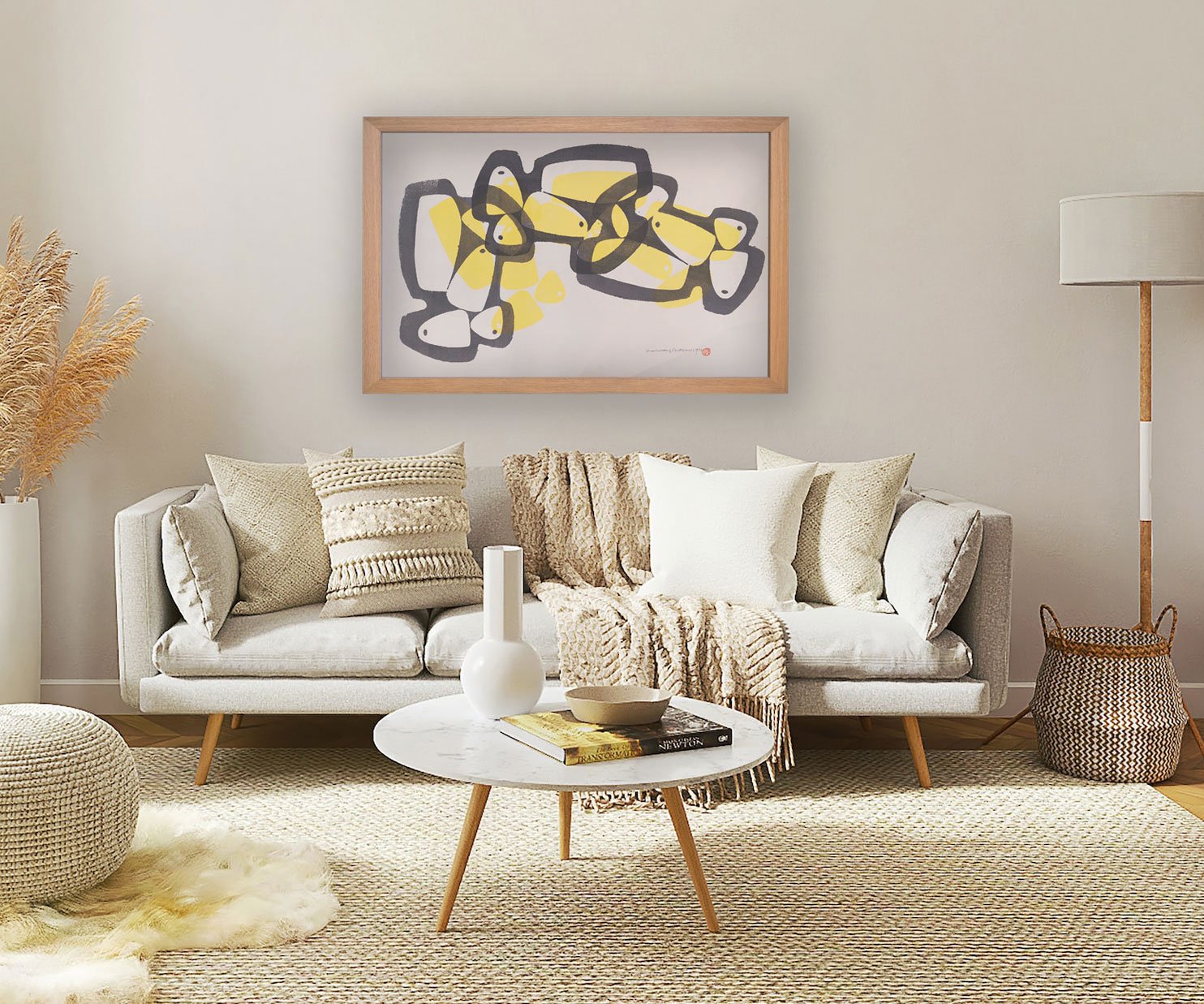Guy Ngan
1926-2017
We are delighted to represent Guy Ngan’s work on behalf of his family and have a number of his original woodblock and serigraph prints available for sale.
-
Guy Ngan OBE 顏國鍇 was a Stokes Valley artist who worked across a large range of media, including sculpture, painting, drawing, design and architecture. Born in Wellington, from the age of 14 Guy supported himself through woodcarving and furniture-making, learning from Hori Young and cabinet maker Billy Gee. At 17 he began night school at Wellington Technical College with sculptor Alex Fraser who encouraged him to travel to London to continue his studies. Following graduation from the Royal College of Art in 1954 as a Designer of the School of Wood, Metal and Plastics, Ngan undertook a scholarship to the British School in Rome.
On returning to New Zealand Ngan worked in architecture, first as a public artworks consultant for the Ministry of Works and then for Stephenson and Turner Architects. He was the Director of the New Zealand Academy of Fine Arts from 1976 to 1986 and received an OBE for services to the arts in 1983.
-
Wellingtonians will be familiar with Ngan’s public works: the bronze sculpture on the Reserve Bank building on The Terrace; the large geometric mural on the Archives New Zealand building on Thorndon Quay; the sculptures in his home suburb of Stokes Valley; and the tapestries which have now been reinstated in the Beehive, Forest in the Sun (1976), designed by Ngan and woven by respected Wellington fibre artist Joan Calvert with the assistance of Dorothea Turner and Jean Ngan.
In 2019 Guy Ngan’s work was showcased through exhibitions at The Dowse in Lower Hutt, Wellington – Guy Ngan: Habitation – and Artspace Aotearoa in Auckland – Guy Ngan: Either Possible or Necessary.
-
Woodblock printing or block printing is a technique for printing text, images or patterns which originated in China in antiquity, initially as a method of printing on textiles and later on paper. Each page or image is created by carving a wooden block to leave only some areas and lines at the original level; it is these that are inked and show in the print, in a relief printing process. Carving the blocks is skilled and laborious work, but a large number of impressions can then be printed. Source Wikipedia.
The four woodblock prints available through Mitchell Studios were Guy Ngan’s only foray into woodblock printing before he moved onto serigraph printing.
-
Serigraph printing (also called screen printing and silkscreen printing) is a printing technique where a mesh is used to transfer ink or dye onto a substrate, except in areas made impermeable to the ink by a blocking stencil. A blade or squeegee is moved across the screen to fill the open mesh apertures with ink and a reverse stroke then causes the screen to touch the substrate momentarily along a line of contact. This causes the ink to wet the substrate and be pulled out of the mesh apertures as the screen springs back after the blade has passed. One colour is printed at a time, so several screens can be used to produce a multi-coloured image or design. Originating in China, traditionally silk was used in the process, but it can of course be applied to a number of surfaces, including paper. Source Wikipedia.
Limited Edition Woodblock & Serigraph Prints by Guy Ngan
Series 22 serigraph in situ
Series 23 serigraph in situ
Series Eighteen serigraph in situ
Series Seventeen serigraph in situ
Series Thirty serigraph in situ
Series Two woodblock in situ


















